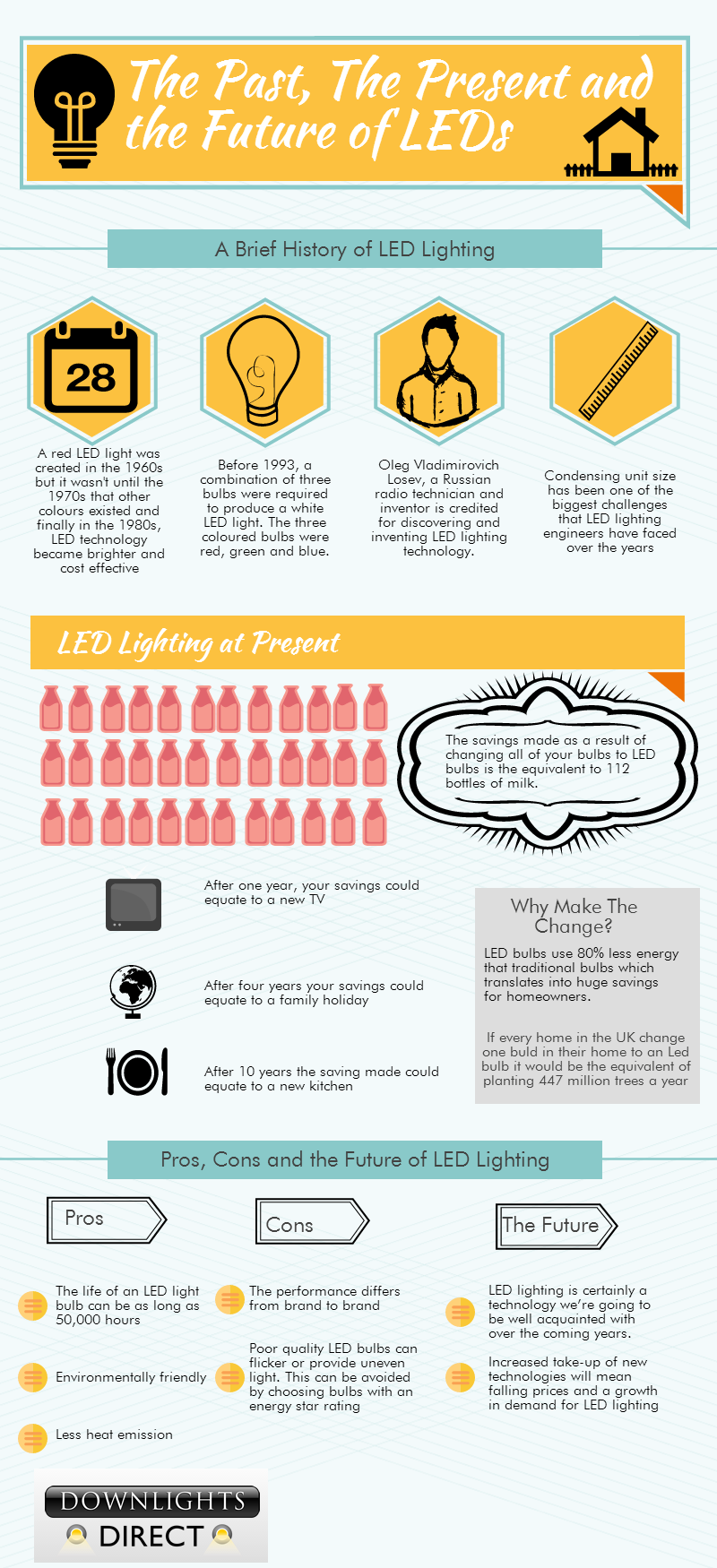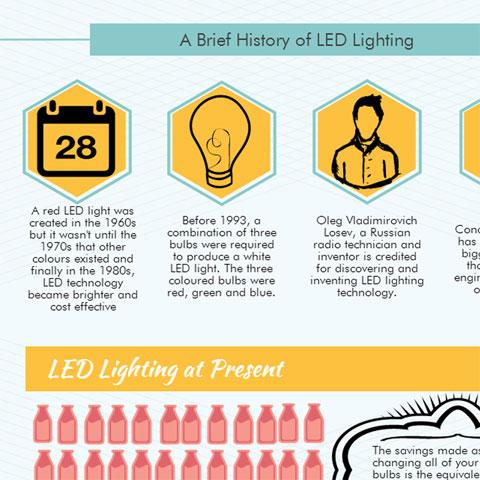The Past, The Present and The Future of LEDs at Home
LEDs are the future. Well, at least that’s what we’ve been told for what seems like an eternity by electrical experts. Supposedly more sustainable and more cost efficient, LED (light-emitting diode) lighting has long been heralded as the future for lighting. However, having said that, it is only over the course of the past few years that we have seen LEDs become available to the mainstream.
Always viewed as a tantalisingly close possibility, at some stages it appeared as though functioning, affordable LEDs would always remain a distant hope rather than something that was in every home on the street. Now, however, the technology has been realised and, although it still isn’t perfect, LEDs are commonplace in towns and cities across the globe. With this in mind, let’s look at the past, the present and the future of LEDs to see how this technology can improve further over the coming years:
A Brief History of LEDs

LEDs were first developed 50 years ago, but the path from idea to mass production has been far from a simple one. Many people have complained in the past that their LEDs suffer from discolouration, with poor light quality emitted. In addition to this, many consumers originally felt as though they were insufficient to light homes - especially as there were issues with some of the lights flickering. Of course, reputable manufacturers have managed to overcome most (if not all) of these issues since the technology was first developed, but some users still remain wary of the product.
The issues that first plagued LEDs almost half a century ago stem from the fact that the lights are far more complex than a traditional light bulb where the filament glows. With this increased complexity comes additional efficiency: in a traditional light bulb, only 10% of the energy consumed in the process is transferred to light emitted.
Over time, the largest challenge facing engineers has been the size of the LED unit. Due to the fact that the unit has to play host to chips, components, a heat sink lense and mechanical components, it is easy to see why engineers have struggled to condense unit size.
LED Lights at Present
Over the course of the last 5 years (maybe even less) the technology in LED lights has revolutionised considerably, meaning that most of the original problems have been overcome. In addition to this, industry experts believe that the technology in the lights is on an upward trajectory, meaning that in the next 5 years, the technology will have improved further still. This, many engineers believe, will mean that all new build housing will be completely lit by LED.
With this in mind, what are the pros and cons of LED lighting, and where is there still scope for improvement?
Pros, Cons and the Future
Whereas halogen bulbs have a lifespan of around 3,000 hours, LED lights will last anywhere from 25,000 hours to 40,000 hours, using 90% less electricity in the process. As a result of this, energy bills are lower and carbon emissions are drastically reduced.
These are not the only areas where LED lights have been improved, and now even the quality of the light emitted has been enhanced, with a range of options available that transcend the Kelvin scale.
What Issues Need to be Addressed in the Future?
Of course, despite all of these improvements, there is much more work to be done in order to ensure that LED lights live up to their potential as the light source of the future. For example, reliability problems remain an issue. Between brands and styles, performance and lifespan alter drastically, and because the technology continues to evolve, most bulbs can be out of date before they’ve finished their lifespan, thus meaning that even more money has to be spent for a better quality bulb.
Overall, however, the improvements made have been vast - now looks set to be the perfect time to invest in LEDs, with the technology continuing to constantly evolve.

At Downlights Direct we offer a full suite of LED lighting solutions for the domestic and commercial sectors. Specialising in LED downlights, we can provide lighting designs and project prices.

